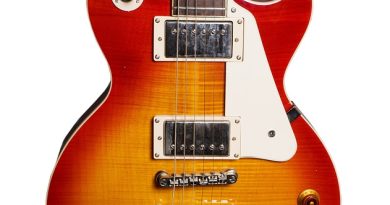Mastering Modal Chords: A Complete Guide for Guitarists
Mastering Modal Chords: A Complete Guide for Guitarists
Modal chords are an essential part of every guitarist’s repertoire. Understanding how to use modal chords effectively can take your playing to the next level, allowing you to create more dynamic and interesting sounds in your music. In this guide, we will break down the basics of modal chords, explore the different modes, and provide tips on how to master them on the guitar.
Understanding Modal Chords
Modal chords are built from the modes of the major scale. Each mode has a unique set of intervals that give it a distinct sound and character. By understanding the intervals and chord shapes associated with each mode, you can create chord progressions that capture the essence of the mode you are playing in.
The seven modes of the major scale are Ionian, Dorian, Phrygian, Lydian, Mixolydian, Aeolian, and Locrian. Each mode has a specific chord progression that is typically used to highlight its unique sound. For example, the Ionian mode is often associated with major chords, while the Dorian mode is known for its minor chords with a flat third and seventh.
Mastering Modal Chords on the Guitar
Now that we have a basic understanding of modal chords, let’s dive into how you can master them on the guitar. Here are some tips and techniques to help you become proficient in playing modal chords:
1. Learn the intervals of each mode: Understanding the intervals of each mode is crucial for identifying the chord shapes associated with them. Take the time to memorize the intervals of each mode so that you can easily recognize them when playing on the guitar.
2. Practice chord progressions in each mode: To master modal chords, practice playing chord progressions in each mode. Start with simple progressions and gradually increase the complexity as you become more comfortable with the modes. This will help you internalize the sound and feel of each mode.
3. Experiment with different voicings: Don’t be afraid to experiment with different voicings of modal chords. Explore different fingerings and positions on the guitar to discover new and interesting sounds. This experimentation will help you develop your own unique style and sound.
4. Use modal chords in your compositions: Once you feel confident in playing modal chords, incorporate them into your compositions. Experiment with different modes and chord progressions to create dynamic and engaging music. Don’t be afraid to break the rules and explore new musical territories.
5. Listen to and analyze music in different modes: To truly master modal chords, listen to music that utilizes them effectively. Analyze the chord progressions and soloing techniques used in these songs to gain a deeper understanding of how modal chords can be used in a musical context.
6. Practice regularly: Like any skill, mastering modal chords requires consistent practice. Set aside dedicated practice time each day to work on your modal chord progressions and technique. The more you practice, the more comfortable and proficient you will become in playing modal chords on the guitar.
Conclusion
Mastering modal chords is a challenging but rewarding journey for guitarists. By understanding the intervals of each mode, practicing chord progressions, experimenting with different voicings, and incorporating modal chords into your compositions, you can unlock a world of new musical possibilities. Remember to listen to and analyze music in different modes, and to practice regularly to improve your skills. With dedication and hard work, you can become a master of modal chords and take your playing to the next level.






